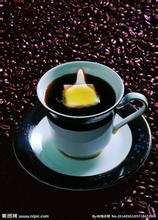The practice of mocha coffee the method of using mocha coffee pot
Process analysis:
Initial heat: After the lower pot is heated, the air part is heated and expanded, generating pressure, and the water reaches the powder tank through the water pipe of the powder tank. Coffee powder swells rapidly in water and forms a powder cake. At this time, the water in the lower pot is resisted by the powder cake, and the pressure of the closed lower pot continues to increase. The purpose of the initial heat is to raise the water level to the position of the powder tank and let the coffee powder cake, so there is no need for high pressure and high temperature, as long as the fire is small. If you open the lid of the upper pot, a small amount of coffee will flow out, and then the coffee will no longer flow out.
Pressurization: After the coffee cake in the powder tank, the pressure in the pot begins to increase, and the fire is turned to medium fire to allow the pressure to continue to increase.
Extraction: Fire. The pressure of the lower pot is increased to balance with the resistance of the coffee powder cake, and the fire is opened to allow the pressure of the lower pot to exceed the critical point of this balance. Under the action of continuous fire, the water quickly passes through the coffee powder cake to obtain a completely extracted and balanced coffee liquid.
Kettle: Turn off the fire. Turn off the fire immediately when there is a purr of steam in the coffee pipe. Then let the coffee pot sit for about 30 seconds. There is a proper distance between the water pipe of the lower pot and the base of the lower pot. If the heating is continued, there is still high temperature water passing through the powder tank. At this time, the extracted coffee has coffee residue. In addition, if the lower pot is shaken, the pressure of the lower pot will increase intermittently, or because the water level of the lower pot is unbalanced, there is still water passing through the powder tank. Both causes cause coffee to be over-extracted or over-burned.
Nourishing: Remove the coffee pot from the stove. At this time, it is still necessary to let the coffee pot stand for about 30 seconds to 1 minute. Because the coffee extraction process goes through three different stages, it needs to be homogenized again during the rest process. After nourishing the taste of coffee will no longer have the phenomenon of uneven sweetness and bitterness, very soft.
Operation effect inspection:
After pouring out the coffee, wait for the coffee pot to cool (or rinse the pot with cold water to cool), unscrew the pot, and observe the powder cake in the powder tank. At this point, the powder cake should be completely cake-like, without collapse and cavity. If there are cave-ins and voids, coffee extraction will not work well. Press it with your fingers, it should be dense and slightly elastic.
----------
In addition, if you buy Ground Coffee instead of Whole Bean grinding itself, the powder may be fine. At this time, you can consider using filter paper to avoid impurities entering the pot and affecting the taste when drinking. Filter paper can be wet attached to the top of the powder tank (under the upper pot), or if it is a large filter paper, directly covered in the powder tank can be turned on the pot.

Important Notice :
前街咖啡 FrontStreet Coffee has moved to new addredd:
FrontStreet Coffee Address: 315,Donghua East Road,GuangZhou
Tel:020 38364473
- Prev

What are the varieties of coffee in China? where can coffee be grown in China?
After graduating from Guangdong Institute of Water Conservancy and Electric Power in 1984, Feng Shilin worked in the government for many years, and then went to the sea to work in the construction industry, during which time he has been trying to find a career that he wants to do. He fell in love with coffee at first sight when he came into contact with coffee by chance. In the beginning, Feng Shilin learned most of the knowledge of coffee culture from books. After that, slowly.
- Next

The growth process of boutique coffee the mode of production of coffee beans
1. The uniformity and thickness of grinding 2. Water quality and water temperature of extracted coffee 3. Gouache ratio 1. After the coffee beans are ground into powder, the coffee beans are ground into powder, and the thickness is adjusted in the thick word of white sugar, which is close to that of the coffee cup. The uniformity is completely determined by the grinding tool, and the more expensive the better. two。 Water quality and water temperature A normal cup of coffee, strong
Related
- Does Rose Summer choose Blue, Green or Red? Detailed explanation of Rose Summer Coffee plots and Classification in Panamanian Jade Manor
- What is the difference between the origin, producing area, processing plant, cooperative and manor of coffee beans?
- How fine does the espresso powder fit? how to grind the espresso?
- Sca coffee roasting degree color card coffee roasting degree 8 roasting color values what do you mean?
- The practice of lattes: how to make lattes at home
- Introduction to Indonesian Fine Coffee beans-- Java Coffee producing area of Indonesian Arabica Coffee
- How much will the flavor of light and medium roasted rose summer be expressed? What baking level is rose summer suitable for?
- Introduction to the characteristics of washing, sun-drying or wet-planing coffee commonly used in Mantenin, Indonesia
- Price characteristics of Arabica Coffee Bean Starbucks introduction to Manning Coffee Bean Taste producing area Variety Manor
- What is the authentic Yega flavor? What are the flavor characteristics of the really excellent Yejasuffi coffee beans?

